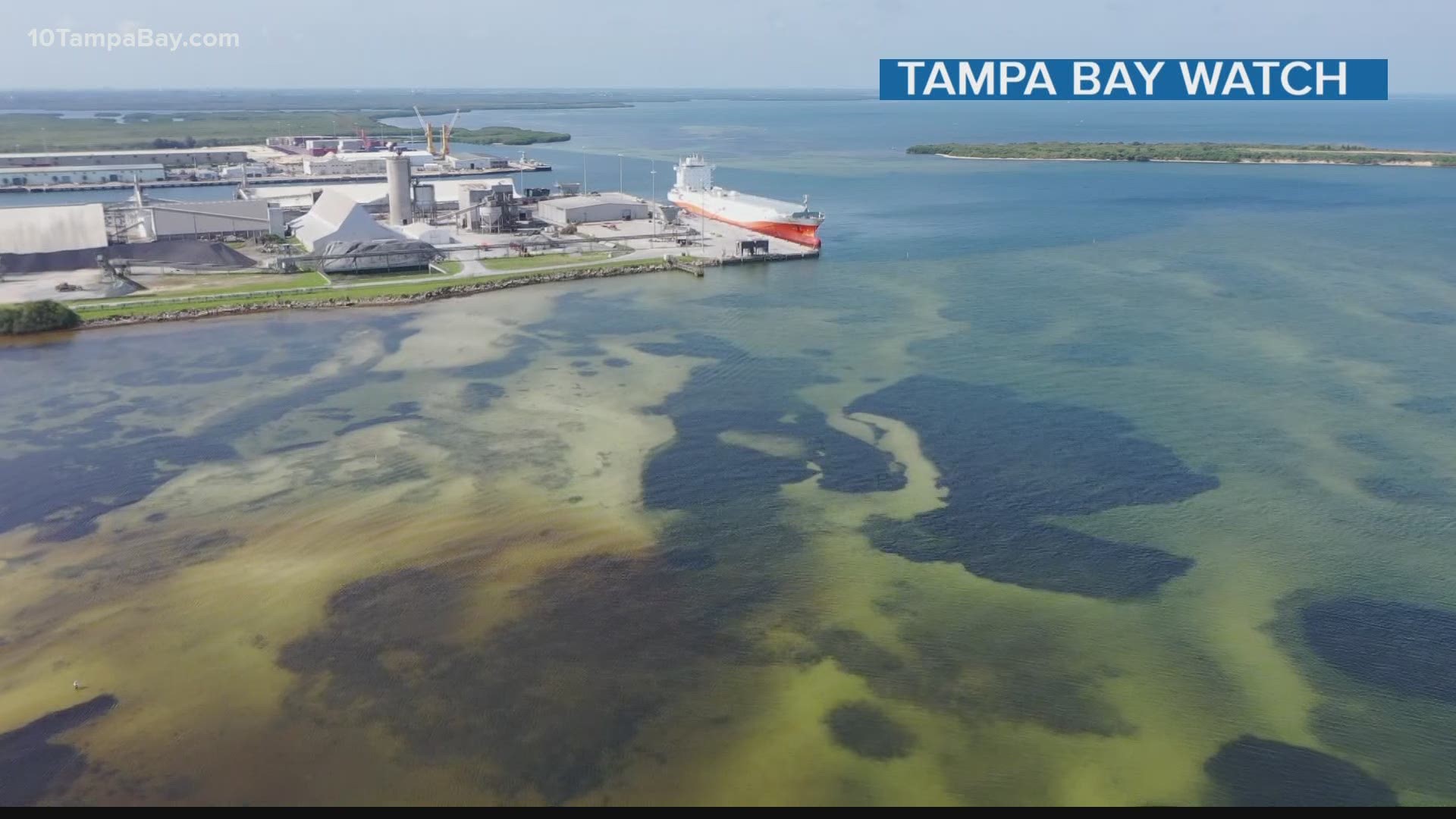It's been more than three weeks since nutrient-rich wastewater first began being released from a reservoir at the former Piney Point phosphate mining plant.
And, while the discharge has since been cut off, environmental groups are concerned about the long-term effects such a move could have on Tampa Bay.
One such group, Tampa Bay Watch, has been flying a drone above the bay to get a bird's eye view of how the water is fairing. They say the concern is that macroalgae in the water in Bishop Harbor and near Port Manatee will compete with the water's bed of seagrass for sunlight.
Algae, just like plants, require sunlight to flourish. The issue is algae sits above the water, blocking that light from reaching other organisms.
"[Seagrass beds] are wonderful for not only stabilizing the bottom of the bay, but they absorb nutrients and other types of material from the water to help keep the bay clean," Tampa Bay Watch President Peter Clark says.
He added that the nutrients in Piney Point's discharge were equivalent to 100,000 bags of fertilizer.
Researchers say it could take months or even years to fully understand the effects of the Piney Point discharge.
What other people are reading right now:
- NASA, SpaceX Crew-2 launches from Kennedy Space Center
- Researchers are studying what effect red tide has on people's brains
- More $1,400 stimulus checks sent. Here's who's getting them.
- Woman and infant son dead in 'tragic crash' between car and train in Frostproof, deputies says
- Florida police officers charged with issuing dozens of bogus citations
- Your guide to the 2021 Firestone Grand Prix of St. Petersburg
►Breaking news and weather alerts: Get the free 10 Tampa Bay app
►Stay In the Know! Sign up now for the Brightside Blend Newsletter

